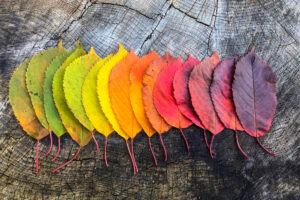Lawn thatch, the layer of organic material that accumulates between the soil and the green vegetation, is a common topic in lawn care discussions. However, there are many myths and misconceptions about thatch that can lead to improper lawn care practices. This article aims to debunk some of the most common myths about lawn thatch and provide accurate information to help you maintain a healthy lawn.
1: Thatch is Composed of Grass Clippings
Debunked: One of the most pervasive myths is that thatch is primarily composed of grass clippings. In reality, thatch consists of dead and living organic matter, including roots, stems, and shoots. Grass clippings decompose quickly and do not significantly contribute to thatch build-up. Instead, it is the parts of the grass that are more resistant to decomposition, such as roots and stems, that form thatch.
2: Thatch is Always Harmful
Debunked: Thatch is not inherently harmful. A thin layer of thatch (less than 1/2 inch) can actually be beneficial for your lawn. It provides insulation, helping to regulate soil temperature and moisture levels. Thatch can also reduce soil compaction and protect the grass roots from extreme temperatures. Problems arise when thatch accumulates to a thickness greater than 1/2 inch, which can impede water, air, and nutrient penetration to the soil.
3: All Lawns Need to be Dethatched Regularly
Debunked: Not all lawns require regular dethatching. The need for dethatching depends on the type of grass, soil conditions, and lawn care practices. Some grass species, such as Kentucky bluegrass and Bermuda grass, are more prone to thatch build-up, while others, like tall fescue, are less likely to develop thick thatch layers. Before dethatching, it is essential to assess the thickness of the thatch layer to determine if dethatching is necessary.
4: Dethatching Should be Done in Any Season
Debunked: The timing of dethatching is crucial for minimizing stress on the grass. Dethatching should be done during the grass’s active growing season to ensure quick recovery. For cool-season grasses, the best time to dethatch is in early spring or early fall. For warm-season grasses, late spring to early summer is ideal. Avoid dethatching during periods of extreme heat, drought, or when the grass is dormant.
5: Thatch Only Forms in Lawns with Poor Maintenance
Debunked: Thatch can develop in any lawn, regardless of maintenance practices. While poor maintenance, such as over-fertilizing and improper mowing, can contribute to thatch build-up, other factors also play a role. Certain grass species naturally produce more thatch, and soil conditions, such as poor aeration and low microbial activity, can slow down the decomposition of organic matter. Even well-maintained lawns can develop thatch if the conditions are right.
6: Removing Thatch Will Damage the Lawn
Debunked: While dethatching can be stressful for the grass, it does not cause lasting damage if done correctly. Dethatching during the grass’s active growing season allows for quick recovery. It is essential to follow proper dethatching techniques and provide adequate post-dethatching care, such as watering and fertilizing, to help the lawn recover. In the long run, removing excessive thatch improves lawn health by allowing better water, air, and nutrient penetration to the soil.
7: Thatch Prevents Weeds
Debunked: Thatch does not effectively prevent weeds. In fact, a thick thatch layer can create conditions conducive to certain weed species that thrive in low-nutrient, compacted environments. Proper lawn care practices, such as regular mowing, balanced fertilization, and soil aeration, are more effective at preventing weed growth than relying on thatch.
8: Grass Clippings Should Always Be Collected to Prevent Thatch
Debunked: Grass clippings do not significantly contribute to thatch and can actually benefit your lawn when left in place. Clippings decompose quickly and return valuable nutrients to the soil, reducing the need for additional fertilization. Mulching mowers, which finely chop the clippings, can help distribute them evenly across the lawn, promoting faster decomposition and reducing the risk of thatch build-up.
9: Dethatching is the Only Solution for Thatch Problems
Debunked: Dethatching is one of several methods for managing thatch. Other effective strategies include regular soil aeration, topdressing with compost or soil to promote microbial activity, and proper lawn care practices, such as balanced fertilization and appropriate watering. Preventative measures, such as choosing grass species less prone to thatch build-up, can also help manage thatch.
Conclusion
Understanding the facts about lawn thatch is essential for effective lawn care. By debunking common myths, you can make informed decisions about managing thatch and maintaining a healthy lawn. Remember that a thin layer of thatch can be beneficial, and not all lawns require regular dethatching. Proper lawn care practices, including regular monitoring, balanced fertilization, and soil aeration, can help prevent excessive thatch build-up. With accurate information and effective strategies, you can enjoy a lush, healthy lawn free of excessive thatch.








Reader Interactions